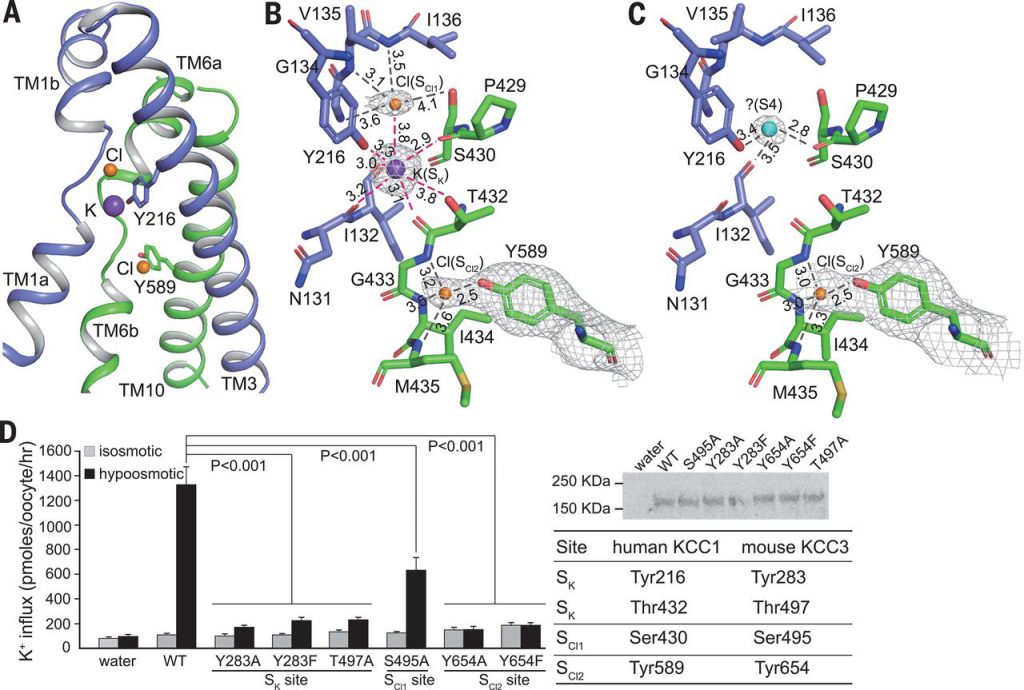Once the homeostasis of potassium, sodium, and chloride in human cells is out of balance, it will lead to a series of diseases such as hypertension, depression, and epilepsy. At the cell membrane, there is a class of proteins known as cation-chloride cotransporters that effectively regulate ion homeostasis in the cell. The group of Guo Jiangtao of Zhejiang University School of Medicine solved the 2.9-Å high-resolution cryo-EM structure of a member of this class of proteins, the human potassium-chloride cotransporter KCC1, revealing the binding site of potassium and chloride ions and proposing a model for the potassium-chloride cotransport mechanism. The work was published on October 25 in Science.

Because KCC2, a member of the potassium-chloride cotransporter, continuously transports intracellular potassium and chloride ions to the extracellular space, the intracellular chloride concentration of inhibitory neurons can be maintained low. If KCC2 is mutated, inhibitory neurotransmission is disrupted, which triggers various neurological disorders. But why has the veil of the KCC family never been unveiled? The reason, Guo introduced, is that samples of potassium-chlorine cotransporters are not easy to obtain, and high-resolution structural elucidation of membrane proteins with smaller molecular weights is challenging.
After extensive optimization of protein expression and purification conditions, the group finally obtained sufficient amounts of KCC1 protein samples that could be used for cryo-EM data collection. At this point, the 300 kv high-performance cryo-EM Titan Krios at the Zhejiang University Cryo-EM Center came in handy. In order to reduce electron radiation damage to proteins, protein samples need to be collected in a frozen environment. Prior to data collection, the researchers used liquid ethane to quickly freeze the protein solution sample on a “copper grid”. The EM data collection process is a bit like making a movie: 40 consecutive photographs are taken in 8 seconds to form a “micromovie”.
The group finally obtained two sets of three-dimensional structures of KCC1 at 2.9 Å resolution, which is helpful for the design of drugs against KCC and providing help in treating diseases such as epilepsy.